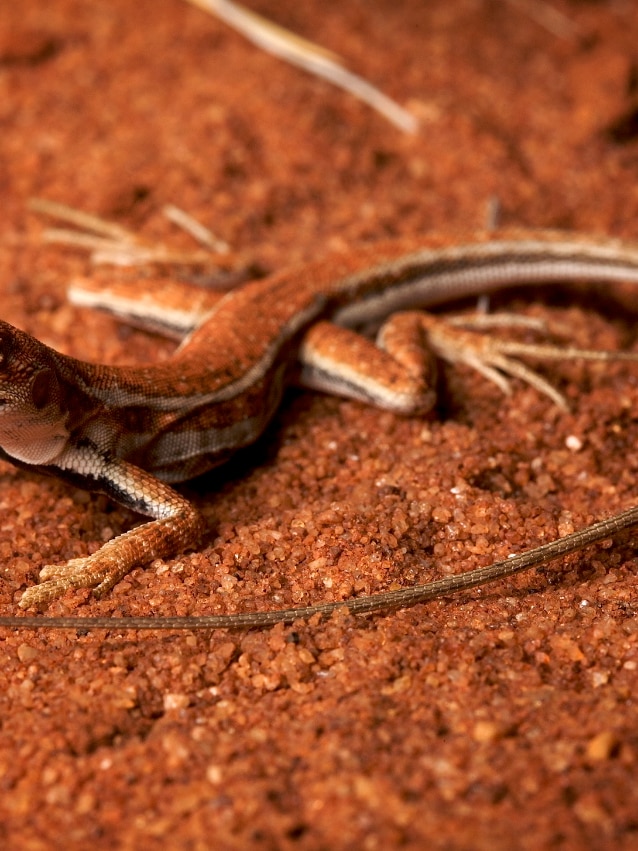Four new species of sand dragon lizards have been discovered in South Australia, with the lizards named after the traditional languages of the country where they were found.
Key points:
- All lizards have been given Indigenous names
- Atypically, the female lizards were found to be bigger than the males
- Male lizards were also brighter-coloured than the females
The lizards belong to the Ctenophorus family and were identified by Danielle Edwards, curator of terrestrial vertebrates at The Museum and Art Gallery of the Northern Territory.
They are the tjakalpa, kartiwarrui, ibiri and the tuniluki.
Tjakalpa being the indigenous name for the Great Victoria Desert, where the lizard lives.
Kartiwarrui refers to the Dieri term for red-backed lizard and is found in the Strzelecki Desert.
Ibiri means “small lizard” in the Barngarla language, and are found in parts of the Eyre Peninsula.
Tuniluki translates to “sand lizard” in Ngarrindjerin, with that lizard found in the mallee along the River Murray.
The find has been more than a decade in the making, when Dr Edwards set out in collaboration with Mark Hutchinson from the South Australian Museum in 2008 to see whether more sand dragons than the three that were then known existed.
The research found a total of 11 species, with four of those completely new to science.
Differences between lizards
Each of the four lizards can be differentiated by their colour and the markings found on their chest and throats.
“They differ in predictable ways based on where they live,” Dr Edwards said.
“Species that live in dune crests had very long tails, limbs, and some of them had even evolved feather-like structures on the bottom of their toes to help them navigate sand environments.”
She said that the recently identified sand dragons displayed differences to known types.
“Usually the males are a lot bigger than the females, but here we notice that sometimes the females are a lot bigger than the males,” Dr Edwards said.
“We often look to these differences to distinguish species.”
“Even the males are more brightly coloured than the females, which is the opposite to what we see.
“The males are the colourful charismatic stars of the show, they have elaborate displays and are very visible in an ecosystem.
“More often than not, females would also express portions of the male badges on the throat and chest in varying ways.
“Sand dragons really show us that this is not the status quo and that female interests are just as important to the evolution of dragon lizards, they are just under appreciated.”
Posted





